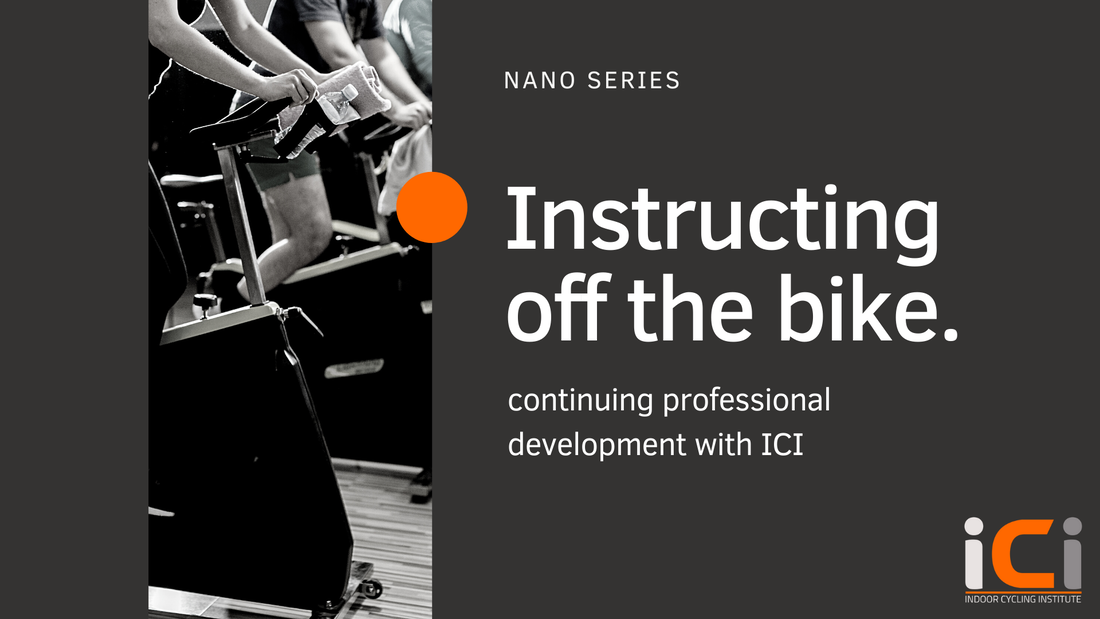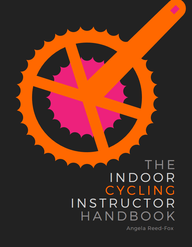Elevating Indoor Cycling: Navigating Qualifications and CertificationsResearch: digest of article and application to indoor cycling: Exercise professional education, qualifications, and certifications: a content analysis of job postings in the United States
Pojednic Rachele, O’Neill Devin P., Flanagan Molly G., Bartlett Alexis, Carter Byron LaGary, Kennedy Mary A. Front. Sports Act. Living, 18 January 2024 Sec. Physical Education and Pedagogy Volume 6 - 2024 The fitness industry, particularly within the realm of indoor cycling, is rapidly evolving. As demand grows for more specialised and knowledgeable instructors, the need for advanced qualifications and certifications becomes increasingly crucial. This article delves into the changing landscape of the exercise science industry in the U.S., highlighting the importance of ongoing education for indoor cycling instructors.
0 Comments
ICI Nano: Instructing off the bike for indoor cycling instructorsInstructing off the bike in an indoor cycling class - Why it’s done, when it’s done, and how to do it well
Instructing off the bike is something you may do during a session – or possibly in some circumstances, you may need to instruct an entire session off the bike. If you had to instruct a class off the bike this evening, how would you feel about that? We tend to get used to what our ‘normal’ is. One of the biggest fears people have is public speaking. Perhaps giving a speech would be scary – but essentially every time we get on that bike at the front of the class, we’re public speaking! But what happens when we take the bike away? Would that feel scarier? Why would you teach off the bike? Reason 1: Correction The most common reason to instruct off the bike is that you might need to subtly and sensitively correct someone’s technique. Occasionally you’ll get those riders who no matter what you say, no matter how you demonstrate bad and good technique, they’re still getting it wrong. Perhaps they didn’t hear. Perhaps they don’t realise they’re doing what they’re doing. Perhaps they’re just not really paying attention! In situations where the rider is putting themselves at risk by not applying your instruction to their cycling, you may need to come off the bike. Usually this will be because a rider is pedalling too fast with insufficient resistance on and therefore you have no choice but to fix this. Try to correct by instructing the whole class and not referring to any one rider; “let’s just check our cadence, make sure we’re sticking between 70-80RPM – that's the big number on your bike’s console; follow my footspeed if you’re not sure.” This is a good way of reminding riders what they should be doing, letting them know where to find the information, and giving them an alternative way of achieving it if they’ve forgotten their glasses and can’t see the metrics on the console in front of them. Once you’ve ascertained that this approach hasn’t worked, you’ll need to up your intervention by coming off the bike. If a rider is putting themselves at risk, you need to address that. Reason 2: Encouragement You may want to come off the bike to give more energy and encouragement to individual riders. This is particularly valuable during long timetrial sections or perhaps when some riders are undertaking a power test. Reason 3: Improvement Riders don’t ride with perfect technique all the time. Sometimes they ride with perfect technique none of the time! Coming off the bike and doing a round of the class pointing out to individual riders how to pedal more efficiently and effectively, how to get more from each pedal stroke is valuable. Maybe some riders are riding with their toes down, maybe some riders are pedalling ‘in squares’ and not making the most of the ‘pull up’ and ‘push over’ parts of the pedal stroke. Maybe some riders may benefit from a change in handlebar position – you can make small adjustments during the class by coming off the bike. Always ask permission for touching a rider’s person or their bike. It's the professional thing to do. This article is an excerpt taken from the Instructing off the bike nano course. Want to find out more about instructing well off the bike? ICI Nano courses are a great way to update yourself as an instructor and get concise information in a bitesize chunk of time. Click below to get started on the Instructing off the bike nano course now: Continuing development for indoor cycling instructors - EPOC explainedEPOC stands for excess post-exercise oxygen consumption; you’ll already know about the calorie-torching benefits of regular indoor cycling sessions, but EPOC is like a secret weapon in the quest for a greater calorie burn and even better results from each session; it gives an extra burn for several hours after the workout which means the total calories burned as a result of the workout is increased, you can improve your performance in each session, and there are other health and weight loss benefits too. What is EPOC? EPOC is the increased amount of oxygen our bodies will consume after a workout that takes us to a higher intensity than that of our regular ‘baseline’ level of oxygen consumption, and the corresponding calorie burn (increase in metabolism) that occurs in response to the body needing to work to return to the pre-exercise state. It means we burn more calories after exercise than we do before exercise, as our bodies are recovering and restoring depleted stores of oxygen and glycogen. EPOC is increased due to:
Why does EPOC happen? All bodily functions are geared around getting the body back in balance (homeostasis) after a change, and working out at increased intensity is no different. Returning to homeostasis requires energy to do so – and this means the calorie burn is elevated after a workout compared to where it was before it. During this period blood will be re-oxygenated, hormones will be rebalanced, there will be decrease in core temperature and heart rate and respiration will return to normal. How long does EPOC last? The science is not settled on this, but oxygen consumption (and therefore metabolism) can be raised for up to 24 hours after the workout. How much does EPOC increase calorie burn? There is no definitive answer to this as there are so many factors that affect the overall burn after just one workout:
This article was taken from the EPOC Explained nano course. ICI Nano courses are a great way to update yourself as an instructor and get concise information in a bitesize chunk of time. Click below to get started on the EPOC Explained nano course now:
|
Categories
All
|
Quick links
Get started
|
Find what's right for you
|
Courses
|
Further learning
|
More
|
The Indoor Cycling Institute provides the most comprehensive and up to date indoor cycling instructor training; providing entry-level courses, and further education to raise the standard of instructors.
© 2014-2024 Protheorem Ltd
The Indoor Cycling Institute is owned and operated by Protheorem Ltd Registered in England & Wales, Company number 12812092
The Indoor Cycling Institute is owned and operated by Protheorem Ltd Registered in England & Wales, Company number 12812092







